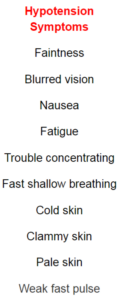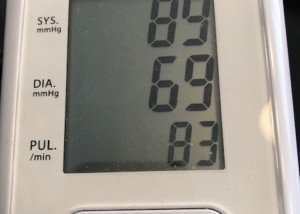
Some people are worried that a blood pressure reading of 110 over 60 is not safe and can lead to feeling dizzy, faint or actually passing out.
What worries some people more is the bottom number of a blood pressure of 110 over 60.
The top number is referred to as systolic.
The bottom value is diastolic.
High blood pressure and its health hazards get most of the attention by far because it’s a huge risk factor for ischemic stroke and other serious disorders.
It’s referred to as the silent killer because high blood pressure (hypertension) yields no symptoms.
However, when blood pressure is too low (hypotension) it can cause what’s often described as feeling faint or being on the verge of passing out.
So what about 110 over 60 blood pressure?
“This is okay unless a patient has symptoms of orthostasis….dizziness upon arising,” says Richard Honaker, MD, Chief Medical Advisor at Your Doctors Online, with 30+ years’ experience as a primary care physician.
Many perfectly healthy and even athletic people experience what’s described as the room blacking out when they quickly rise from a seated position that they’ve been in for a while.
The simple cure is to rise slowly or in several stages, counting to 10 for each stage.
If the faint or blacking-out sensation isn’t resolved by this simple measure, then your 110 over 60, as an average blood pressure reading, may be too low for you.
Dr. Honaker continues, “110 is okay, but 60 is a bit low because the coronary arteries that nourish the heart muscle fill up with blood during diastole (as opposed to systole), which is reflected in the bottom number of BP measurement.
“Thus, a low diastolic BP may result in low blood flow to the heart — which can be dangerous in an elderly or heart disease patient.”
In fact, for people whose systolic is typically lower, say, in the range of 95 to 105, the value of 110 will be higher than average for those particular individuals.
If you’re healthy you need not take the 110 over 60 reading to mean that you’re at risk for a drop so low that you begin suffering from fainting or blackouts.
When is blood pressure dangerously low?
“In general, if patients are asymptomatic and the systolic blood pressure is approximately 90mmHg or better, you do not need to treat,” says cardiologist Teresa Caulin-Glaser, MD, in another article of mine called Symptoms of Low Blood Pressure, Dangers & Solutions.
“However, if the person is developing symptoms such as dizziness, fatigue, and/or passing out,” adds Dr. Caulin-Glaser, “there needs to be a full history and medical evaluation.”

If you have any of these symptoms but your blood pressure is 110 over 60, they are not likely being caused by your blood pressure.
The symptoms listed above can have many unrelated causes and need fast medical attention.
 Dr. Honaker has been recognized by D Magazine as one of the Best Doctors in Dallas several times and a Texas Super Doctor by Texas Weekly. He’s also a recipient of the Physician Recognition Award from the American Medical Association multiple times.
Dr. Honaker has been recognized by D Magazine as one of the Best Doctors in Dallas several times and a Texas Super Doctor by Texas Weekly. He’s also a recipient of the Physician Recognition Award from the American Medical Association multiple times.
 Lorra Garrick has been covering medical, fitness and cybersecurity topics for many years, having written thousands of articles for print magazines and websites, including as a ghostwriter. She’s also a former ACE-certified personal trainer.
Lorra Garrick has been covering medical, fitness and cybersecurity topics for many years, having written thousands of articles for print magazines and websites, including as a ghostwriter. She’s also a former ACE-certified personal trainer.
.









































